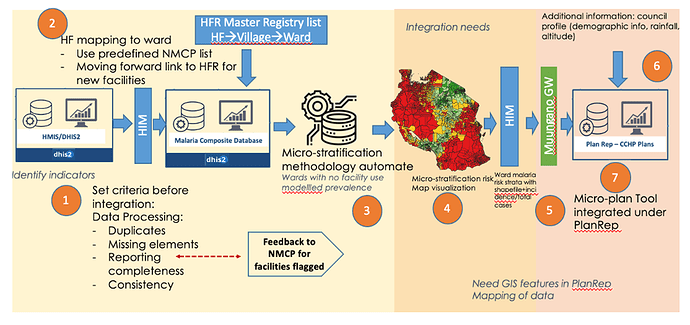By @Bernard, Fortunatus Kawasa, Khalifa Munisi, Summaiya Thawer, Fabrizio Molteni, Frank Chacky, et al
Greetings! My name is Rajab Mkomwa from Tanzania, I am a Senior System Developer at the University of Dar es Salam (UDSM). Through the UDSM DHIS2 Lab, I have consulted widely in the area of Information Systems, including implementation of government systems in the Health, Social Welfare and Agricultural Sector, using the DHIS2.
I would like to invite you to my presentation during the Annual Conference session named Data triangulation (ENG - FR) planned on Wednesday 14 June, 15:30-17:00 Oslo time zone. You can go through overview of my presentation below.
Background
Despite tremendous efforts to control malaria, the disease is still resurging. WHO recommends moving from a one-size fits all approach to targeted control intervention towards elimination. Among the strategies is to utilize available surveillance data to establish transmission intensity across different geographical settings to enable data-driven, efficient, and effective intervention resource allocation. In Tanzania, the National Malaria Control Programme (NMCP) has introduced malaria transmission risk mapping (micro-stratification), which has enabled categorizing areas (up to the ward level) based on transmission levels (i.e., very low, low, moderate, or high). This is geared towards enabling a more tailored approach to malaria surveillance and control. However, the process was done manually, thus hindering the potential of utilizing the stratification information in tandem with other existing data for a comprehensive approach to analysis and planning. Hence, there is a need to incorporate the Micro-stratification approach to monitoring and planning within Tanzania’s existing Malaria Surveillance Framework.
Approach
Built on the existing DHIS2-based malaria surveillance framework in Tanzania; the University of Dar es Salaam (UDSM) DHIS2 Lab, in collaboration with NMCP and Towards Elimination of Malaria in Tanzania (TEMT) Project, worked on digitizing the micro-stratification risk mapping by customizing the data gathering, algorithm design, and visualization maps into the Composite Management Information System (CMIS). The process also included integrating routinely collected malaria data from the National HMIS instance and linking relevant indicators for micro- stratification.
Achievement
The ward stratification module has been customized and deployed within the CMIS, providing users (NMCP and implementing partners) with ward-level risk maps for annual monitoring and planning of malaria based on the processed incoming routine data collected via the national HMIS system. The tool also provides a flexible approach to analyzing such data and maps. The automated output of the micro-stratification process is also expected to be utilized as input for the micro-planning tool for malaria intervention planning.
Conclusion
The digitization of micro-stratification enables malaria stakeholders to easily translate the risk map into suitable plans, thereby supporting a decentralized malaria control approach. Such a tool is expected to improve the allocation efficiency of malaria funding to maximize future impacts on disease burden.
